SUMMARY
This is AI generated summarization, which may have errors. For context, always refer to the full article.
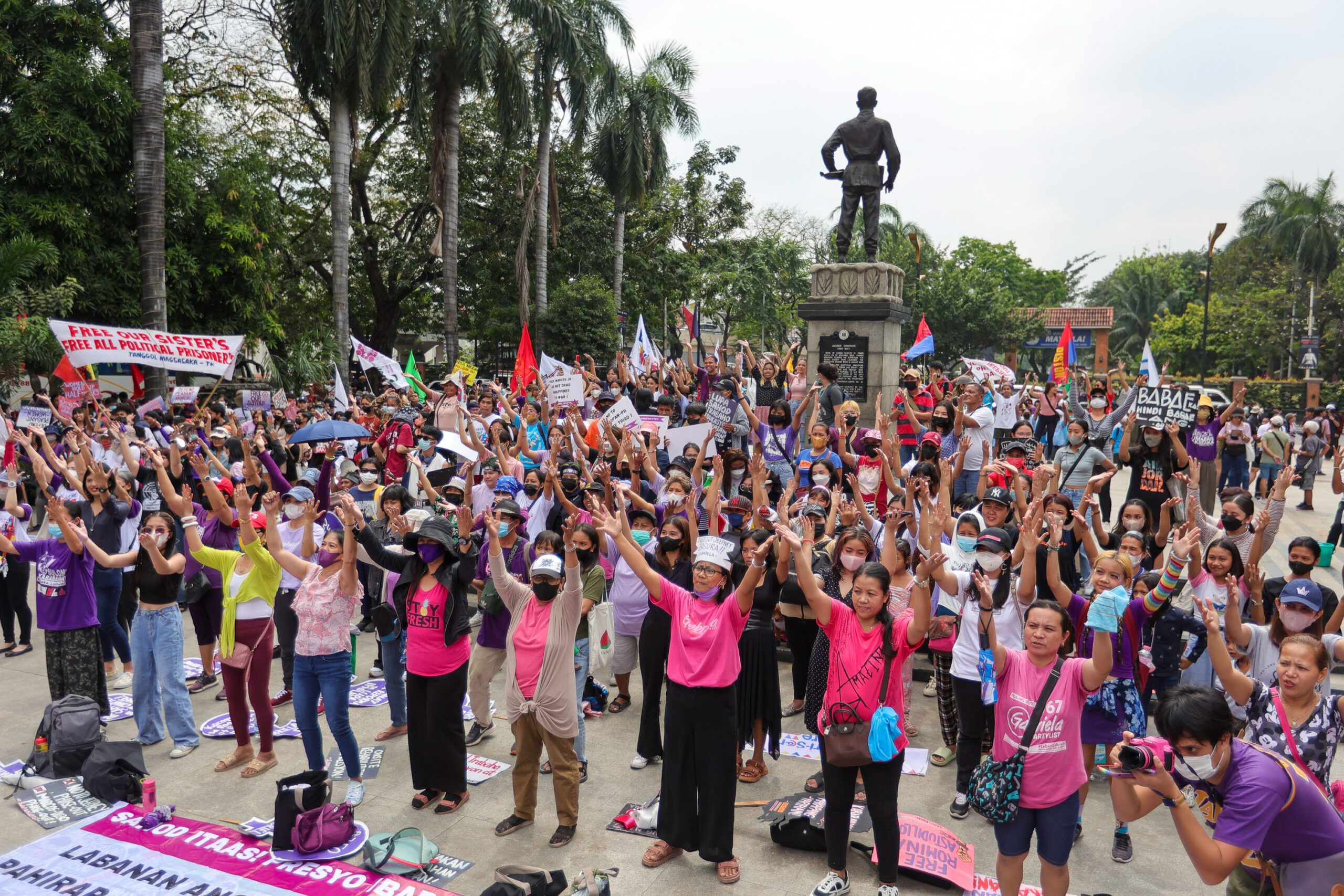
MANILA, Philippines – On Wednesday, March 8, the Philippines took part in the worldwide celebration of International Women’s Day, where advocates celebrated women’s rights advancement in the country.
Local government units also had several initiatives that put women’s rights and comfort front and center. Initiatives centered around economic empowerment, healthcare services, and protection against violence, among others.
While Filipino women have had certain wins in laws and other measures in what some may call a patriarchal, conservative society, advocates say that more work must be done.
The country is also fresh from the administration of Rodrigo Duterte, the predecessor of President Ferdinand Marcos Jr. who assumed power in May 2022. Duterte was notorious for his sexist remarks and, without mentioning the former president, the Commission on Human Rights condemned the “normalization and trivialization” of sex jokes by public officials.
Here are some things to know about the state of Filipino women, according to the Philippine Commission on Women’s (PCW) Estado ni Juana (The state of Juana) report as of December 31, 2022. Some figures were not as of 2022, but were the latest available.
55,922,510
2023 projected population of women in the philippines (2019)
The latest figures from the Philippine Statistics Authority (PSA) projected that there would be 55,922,510 women in the country by 2023, compared to 56,970,271 men.
0.783 out of 1
the philippines’ score in gender parity
In the World Economic Forum’s Gender Gap Report for 2022, the Philippines scored 0.783 out of 1, where 1 represents optimal gender parity.
The score is based on several factors where the country was scored such as women’s economic participation, educational attainment, health and survival, and political empowerment.
From 2021, the Philippines dropped two places from 17th to 19th in the ranking of 146 countries. It came second among countries in the East Asia and the Pacific region behind New Zealand, making it the leading country in Asia for gender parity.
74.6%
completion rate of filipino girls in secondary education (2021)
According to the Department of Education, the completion rate of Filipino girls in the secondary level (Grade 7 to Grade 12) was at 74.6% in school year 2020-2021. Filipino boys had a completion rate in this level of 64.2%.
The elementary level completion rate (Grade 1 to Grade 6) for girls was higher – at 84.7%. Compared to secondary level, boys also had a higher elementary completion rate at 80.5%.
The PSA defines completion rate as “the percentage of first grade/year entrants in a level of education who complete or finish the level in accordance with the required number of years of study.”
2,572,523
women enrolled in tertiary education
In school year 2021-2022, more than 2.57 million women were enrolled in tertiary education, according to the Commission on Higher Education. There were more women enrollees than men, who were at 1.87 million.
Young Filipino women in colleges and universities were up by more than half a million women enrollees in school year 2020-2021 (at 2.04 million), showing an increase of enrollees since the height of the pandemic.
Enrollment beat even pre-pandemic levels, when there were 1.87 million female tertiary students in school year 2019-2020.
34.5%
women’s labor force participation rate (2020)
In the Philippines’ labor force for 2020, the women’s labor force participation rate was at 34.5%, according to the PSA. This was lower than the 54.8% labor force participation rate of men.
The PSA defines the labor force as the “the population 15 years old and over who contribute to the production of goods and services in the country. It comprises the employed and unemployed.”
The employment rate among women was at 90.3%, slightly higher than the 89.4% employment rate of the men.
39%
proportion of women in senior management
In the 2022 Women in Business Report from Grant Thorton, the Philippines dropped from its top spot ranking of female leaders in senior management roles, from 48% in 2021 to 39% to 2022.
However, the country still ranked third in the report’s list of countries with the highest number of women leaders in mid-size firms.
1.9
children per woman
According to the PSA’s National Demographic Health Survey (NDHS) for 2022, the total fertility rate among women aged 15 to 49 was at 1.9. This means that there were around two children per woman for the three-year period preceding the survey.
In other words, one woman bears an average of two children in her lifetime.
In rural areas, the fertility rate was slightly higher at 2.2. It was 1.7 in urban areas.
Most births occurred among the age group 25 to 29, at 105 births per 1,000 among women of that age group.
There were also 25 births per 1,000 girls aged 15 to 19.
The survey also found that half of married women aged 15 to 49 no longer want to have more children.
42%
filipinas have an unmet need for family planning
As for demand for family planning or birth control methods, the NDHS found that 42% of women have an unmet need for family planning.
Some 41.8% of women used any modern contraceptive method, like birth control pills, female sterilization, injectibles, and implants. Another 16.5% used traditional methods like withdrawal and the calendar method. Meanwhile, 41.7% said they were not currently using any contraceptive methods.
The most popular contraceptive method among women was birth control pills at 19.8%. Withdrawal remained the top traditional method, with 13.4% of Filipino women using this method.
5.4%
girls aged 15 to 19 have ever been pregnant
The numbers of teenage pregnancy in the Philippines have dropped in recent years. From 8.6% in 2017, the NDHS found that girls aged 15 to 19 who have ever gotten pregnant dropped to 5.4%.

17.5%
women have experienced any form of domestic violence
In the NDHS, 17.5% of women aged 15 to 49 said they have experienced either physical, sexual, or emotional violence from their current or most recent husband or intimate partner.
Among those who reported experiencing abuse, emotional violence was the most prevalent at 15.2%. Physical violence came second at 6.4%, and sexual violence followed at 2.3%.
Among women who have ever been married and have experienced physical violence, 48% of them said it was perpetrated by their current husband or partner. Meanwhile, 25% said it was from a former husband or partner.
Among never-married women who experienced physical violence, 26% said it came from mothers or stepmothers, while 25% said their perpetrators were their fathers or stepfathers.
For the never-married women who experienced sexual violence, 20% said the perpetrators were friends or acquaintances, while 18% said it came from relatives.
2 out of 5
women who experienced physical or sexual violence never sought help or told anyone about it (2017)
Two out of five or 41% of women who experienced physical or sexual violence have never sought help to end the violence, or told anyone about it, according to the 2017 NDHS.
Only 34% sought help, while just 25% told someone about the violence but did not seek help.
5,333
reported violence against women cases to the pnp (january to june 2022)
From January to June 2022, the Philippine National Police (PNP) logged 5,333 cases of violence against women. Violence Against Women (VAW) cases vary from rape, sexual harassment, trafficking, photo and video voyeurism, and more.
In 2021, the PNP logged 12,535 VAW cases, and 15,292 in 2020. These are lower than the reported 20,860 cases in 2019.
But watchdog groups have said that this could point to underreporting during the COVID-19 pandemic, when lockdowns were enforced.
Read the entire 2022 Estado ni Juana: State of Filiino Women Report here. – Rappler.com
Add a comment
How does this make you feel?

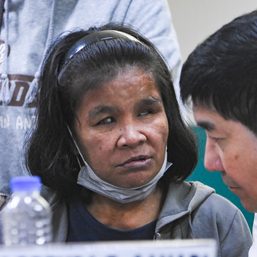

![[Free to Disagree] Arrest Quiboloy!](https://www.rappler.com/tachyon/2024/03/Free-to-disagree-arrest-quiboloy-March-11-2024-1.jpg?resize=257%2C257&crop_strategy=attention)

![[OPINION] Unpaid care work by women is a public concern](https://www.rappler.com/tachyon/2024/07/20240725-unpaid-care-work-public-concern.jpg?resize=257%2C257&crop_strategy=attention)


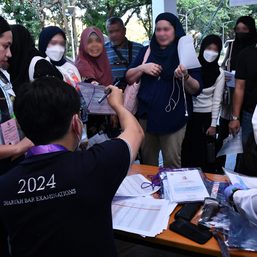


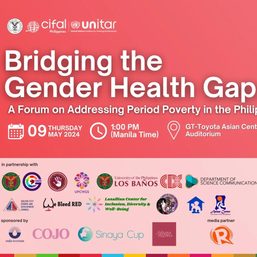
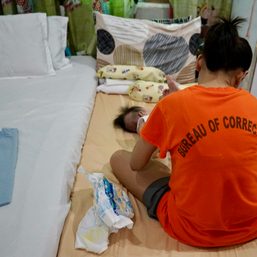
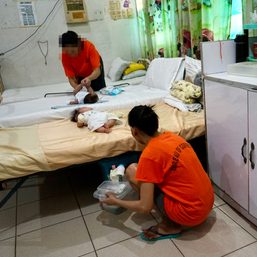
![[Dash of SAS] Making abortion a constitutional right](https://www.rappler.com/tachyon/2024/03/Its_true_-_Flickr_-_Josh_Parrish-1.jpg?resize=257%2C257&crop=125px%2C0px%2C768px%2C768px)



There are no comments yet. Add your comment to start the conversation.